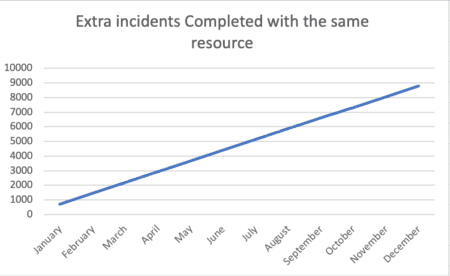During a Field Service event recently, I was asked which one metric would be the most important to focus on.
This is a difficult question to answer as many different businesses and verticals may choose different metrics as their key performance indicators. For example, a service organization that works as a pure cost center may see utilization as their top priority, while an organization that has an outcome-based model may see equipment uptime or MTTR as the most important, and another may see contract attach rate.
Personally, I could not pick one single metric. Instead, I rely on the 9 Service Performance Metrics that are outlined in Diamond in the Rough: Unleashing the Power of Field Service Transformation as my core KPIs. Of the 9 metrics (First-Time Fix, Mean Time to Repair, Repeat Calls, Mean Time To Complete, Utilization, Uptime, Attach Rate, Mean Time Between Failure & NPS), my favorite is first-time fix, which I will focus on for this series.
To kick it off, this article will explore the impact that first-time fix has on your service business. The next two articles of this series will look at why failures happen and where to find solutions.
First-Time Fix and Its Impact On Your Business
So, let’s start with a simple scenario, if a technician at your organization completes 4 visits per day and works 220 days a year, then that technician is completing 880 visits annually. If they have a first-time fix rate of 80%, which is an industry ‘Average’ as measured by the Aberdeen Service Lifestyle Excellence survey, that would mean 176 of those visits are failed first-time fixes, therefore creating at least 176 or more follow up visits.
Increasing this ratio to 90% would reduce that failure rate by 88 visits. If you did this across 10 technicians you would effectively be freeing up the capacity of an extra full-time technician, an eleventh technician for free! For a service business with a thousand technicians, that would enable your business to absorb the workload equivalent of 100 technicians without adding new headcount or incurring any uplift in your operating expenditure.

Additionally, this would also impact many of your expenses positively such as overtime, fuel, and spare parts shipping costs, while reducing the possible risks of Service Level Agreements (SLA) breaches causing penalties due to such things as response time and uptime misses.
Some service leaders may argue that they make money on every service visit, especially on those that are not covered by a service contract, an actual revenue generator. I would argue that this is short-term thinking as it doesn’t take the customer’s frustration into perspective.
Think about it from the customer’s perspective: whether covered by a contract or paying a time & material relationship, 2 failures out of every 10 service requests means extended downtime and possible loss of throughput and potential revenue. How do you think this will impact loyalty or advocacy? When we sit down with service providers and ask them their customers’ biggest pain points, it often revolves around their inability to resolve the service issue. It is only a matter of time before they find an organization that is able to ensure a higher level of reliability and uptime. Getting paid for your mistakes is never a good business model unless of course, you are the only shop in town!
Fundamentally for me, first-time fix is the biggest indicator of your brand. If your FTF is high, customers are more likely to sign or renew their contract (attach rate metric). If they are seeing the value, your efficiency is improved as you are completing more service requests (utilization metric) and the customer’s equipment has a greater potential for output (uptime metric) and the overall downtime is reduced (Mean Time To Complete metric).
Hopefully, now you can see why first-time fix is one of my favorite KPIs and in the next section we will look at areas that cause failures in first-time fix.
Continued Reading:


Share this: